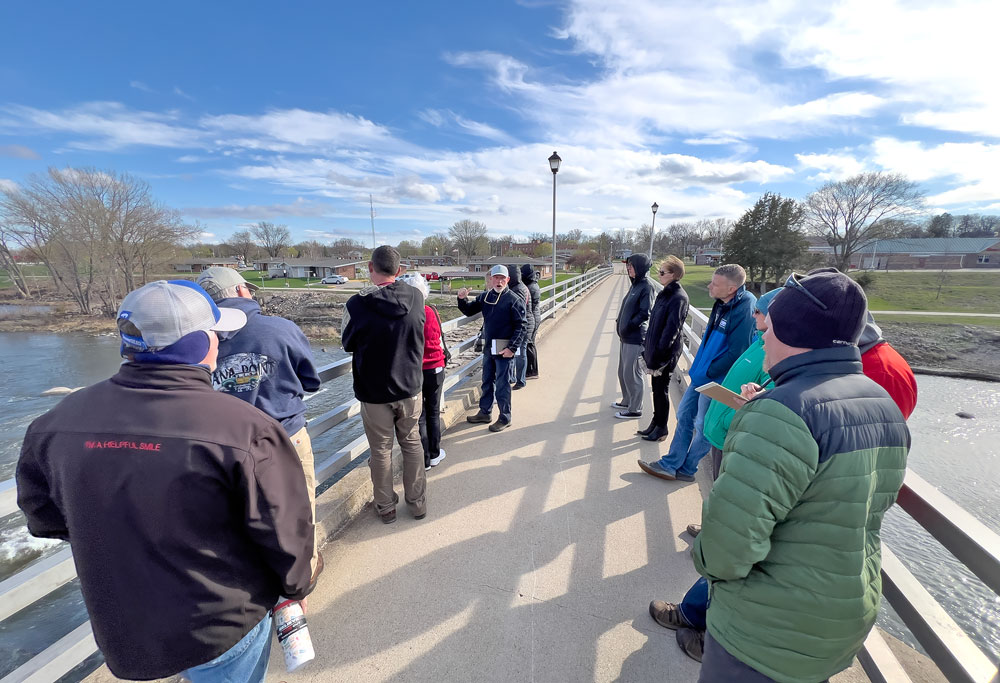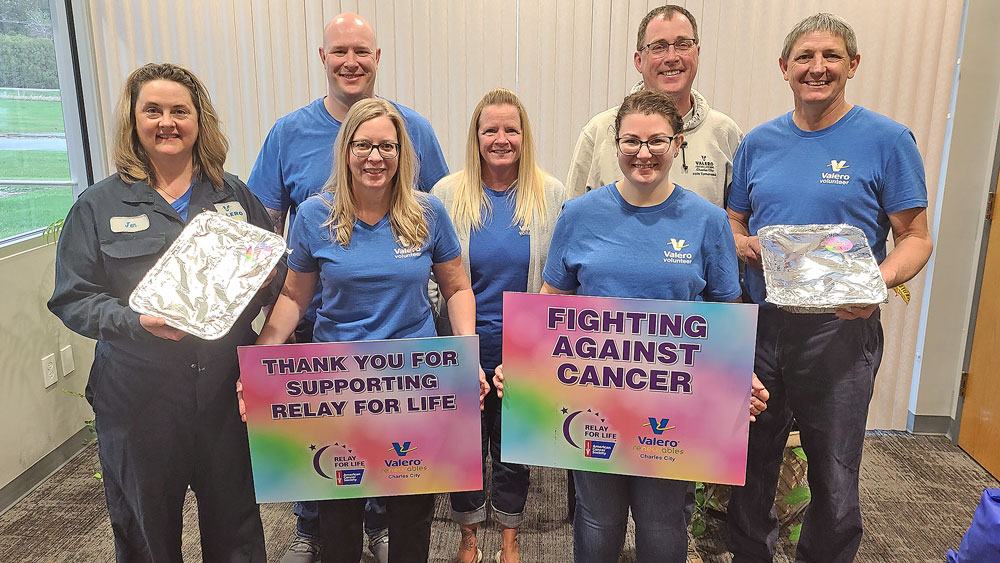Development site proposal moves to supervisors meeting

By Bob Steenson, bsteenson@charlescitypress.com
Another lengthy discussion on the possibility of creating a state-certified development site in Charles City took place Monday morning, this time at the Floyd County Board of Supervisors meeting.
The meeting was a planning session, so no official action could have been taken, but the proposal is likely to be the topic of continued discussion anyway.
The Charles City Area Development Corp. is proposing to purchase about 76 acres on the northeast corner of the intersection of South Grand Avenue and U.S. Highway 218 (the Avenue of the Saints).
The property is owned by Steven and Diana Swartzrock and Rockland Enterprises LLC, and the Area Development Corp. has a two-year option to buy at a price of a little over $2 million, or about $28,750 per acre.
Tim Fox, executive director of the Area Development Corp., said a state-certified site tells a prospective business that the property is essentially “shovel-ready” to begin development or can be made so within six months, and is an important marketing tool.
Connie Parson, of Parson Real Estate Co. in Charles City, has been working with the Area Development Corp. to locate an appropriate development site, and explained some of the history of the search to the Board of Supervisors Monday morning.
She said of 11 properties on or near the Avenue of the Saints that were initially identified as possible development sites, the Swartzrock site was the top-rated choice, and the negotiated price was below the target price the development board had established for a site.
The topic of buying the property had originally come up at a June 28 meeting of the joint Charles City-Floyd County board that controls the Southwest Bypass TIF District in Charles City.
One proposal has been for the development site to be added to the Southwest Bypass TIF district, so property tax revenue from the district can be used to pay for the property.
Bonds would be sold by either the city or the county (likely the county, since it has much more available bonding capacity), and the bonds repaid with property taxes from the district.
Supervisor Mark Kuhn is one of the county’s representatives on the TIF district board, and he raised some issues Monday morning that were similar to those he raised at the TIF board meeting in June.
“I’m supportive of the proposal, but there are some very important points that need to be considered,” Kuhn said, saying he had four primary concerns:
• In order for taxpayers to be assured they are paying a fair market price for the property, he suggested that it be professionally appraised, and the appraisal cost paid by the Area Development Corp.
• He suggested that the purchase be funded with general obligation bonds, so that county taxpayers have the option of calling for a referendum if they want to, and to get a lower interest rate on the bonds than if their sale is financed directly through TIF district increment financing. Either way, TIF district property tax income would ultimately pay off the bonds.
• If the property is purchased by the county and the deed given to the Area Development Corp., Kuhn said any income from cash rent on the land before it is developed and the proceeds of any sale of the land to a business should be used to retire the debt. He also said he would like the county to have more representation on the Area Development Corp. board of directors.
• Kuhn said he would like a discussion on the “perpetual” aspect of the Southwest Bypass TIF District, and a limit on how much of the property tax increment can be used for future development projects, so that part of the increased property taxes from development in the district would be available to the county, city and school district.
Parson said at the meeting Monday morning that the negotiated price for the property was a “very fair deal.”
“The thing to remember is the negotiated amount is the negotiated amount, regardless of what an appraisal says,” Parson said.
In answer to a question from Kuhn, Parson said she was not charging Realtor fees for her work on the project with the Area Development Corp.
“It seems to me like you’ve negotiated a fair price,” Kuhn said, “but as a board we need to justify the price, and an appraisal would answer that. If any bank was asked to fund a purchase like this they’d ask for an appraisal.”
Supervisor Linda Tjaden said that sounded reasonable.
“If the county is going to fund this, it makes sense to get that,” she said.
Fox said that “no one has said otherwise” regarding income or sales proceeds from the land being used to pay off the debt, but he said the county already has four positions on the development corporation’s board, and he wouldn’t want to see the board size increased beyond its current 19 members.
“Nineteen is big enough for me,” he said.
Supervisor Doug Kamm said a bigger board becomes unwieldy, and Tjaden said she thinks four representatives is enough.
Parson asked the supervisors to keep in mind that the reason TIF funding was available for such projects is because of the development successes in the past.
“It makes sense to keep using that for more development,” she said.
Diers said the property purchase would not increase the amount of TIF funds used from the district, because the Valero project ends next year and the Mitas projects ends in three or four years.
“This wouldn’t be an increase in cost,” Diers said.
Kuhn asked what would happen to those funds if they weren’t used for this property purchase, knowing the answer but seeking to make a point.
“It would go back to the city, county and school,” Diers said.
Kuhn said the Southwest Bypass TIF District generates about $1 million a year in its property tax “increment,” that is, the amount of additional property tax revenue that is generated by development that has taken place in the district.
That’s money that could be available to the city, county and school district to fund needed services, he said, asking for a cap on the amount of TIF district increment revenue that can be used for continued development projects.
“A million dollars is a lot of tax revenue,” Kuhn said, and the county faces increasing obligations to fund essential services such as public safety, health care for the elderly and roads and bridges.
Fox said, “What you’re saying is you don’t trust the elected officials to manage it.”
“I’m questioning it,” Kuhn said, saying he has been a public official and been involved in TIF funding long enough to know the pressures on how that money is used.
“I think we’ve been responsible,” Fox said.
Kuhn noted that he’s not running for re-election this year, and said that before he leaves the board he wants a discussion on limits to the TIF district.
Parson said the development that has come from TIF financing has been a
“huge benefit” and has resulted in more jobs and bringing people to the community.
County Auditor Gloria Carr, who acts as clerk to the Board of Supervisors and who is also a member of the Southwest Bypass TIF District board, said she has a concern because new TIF projects are limited to 20 years by state law.
If TIF funds are used to buy the property and it sits there for 15 years before it is sold, there won’t be much time left to help with improvements or offer enticements to a new business.
Parson said there are no guarantees, but she doesn’t think it’s likely the property will sit undeveloped for long.
She said based on her 40 years of experience, “You have an absolute winner here.”







Social Share